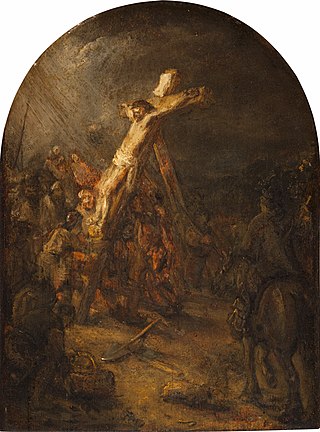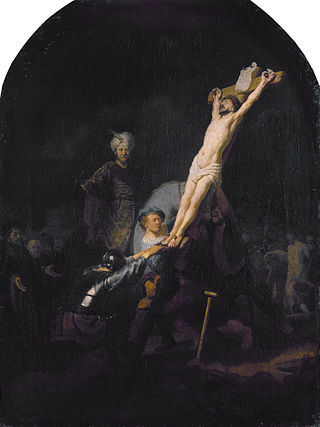Related Research Articles
Gerard Hendrik (Geert) Hofstede was a Dutch social psychologist, IBM employee, and Professor Emeritus of Organizational Anthropology and International Management at Maastricht University in the Netherlands, well known for his pioneering research on cross-cultural groups and organizations.
Cross-cultural studies, sometimes called holocultural studies or comparative studies, is a specialization in anthropology and sister sciences such as sociology, psychology, economics, political science that uses field data from many societies through comparative research to examine the scope of human behavior and test hypotheses about human behavior and culture.
In cross-cultural psychology, uncertainty avoidance is how cultures differ on the amount of tolerance they have of unpredictability. Uncertainty avoidance is one of five key qualities or dimensions measured by the researchers who developed the Hofstede model of cultural dimensions to quantify cultural differences across international lines and better understand why some ideas and business practices work better in some countries than in others.According to Geert Hofstede, "The fundamental issue here is how a society deals with the fact that the future can never be known: Should we try to control it or just let it happen?"
Power distance refers to the unequal distribution of power between parties, and the level of acceptance of that inequality; whether it is in the family, workplace, or other organizations.

Cornelis Hofstede de Groot, was a Dutch art collector, art historian and museum curator.

Hofstede's cultural dimensions theory is a framework for cross-cultural communication, developed by Geert Hofstede. It shows the effects of a society's culture on the values of its members, and how these values relate to behavior, using a structure derived from factor analysis.
Global leadership is the interdisciplinary study of the key elements that future leaders in all realms of the personal experience should acquire to effectively familiarize themselves with the psychological, physiological, geographical, geopolitical, anthropological and sociological effects of globalization. Global leadership occurs when an individual or individuals navigate collaborative efforts of different stakeholders through environmental complexity towards a vision by leveraging a global mindset. Today, global leaders must be capable of connecting "people across countries and engage them to global team collaboration in order to facilitate complex processes of knowledge sharing across the globe" Personality characteristics, as well as a cross-cultural experience, appear to influence effectiveness in global leaders.
Individualistic cultures are characterized by individualism, which is the prioritization or emphasis of the individual over the entire group. In individualistic cultures people are motivated by their own preference and viewpoints. Individualistic cultures focus on abstract thinking, privacy, self-dependence, uniqueness, and personal goals. The term individualistic culture was first used in the 1980s by Dutch social psychologist Geert Hofstede to describe countries and cultures that are not collectivist, Hofstede created the term individualistic culture when he created a measurement for the five dimensions of cultural values.
Cultural communication is the practice and study of how different cultures communicate within their community by verbal and nonverbal means. Cultural communication can also be referred to as intercultural communication and cross-cultural communication. Cultures are grouped together by a set of similar beliefs, values, traditions, and expectations which call all contribute to differences in communication between individuals of different cultures. Cultural communication is a practice and a field of study for many psychologists, anthropologists, and scholars. The study of cultural communication is used to study the interactions of individuals between different cultures. Studies done on cultural communication are utilized in ways to improve communication between international exchanges, businesses, employees, and corporations. Two major scholars who have influenced cultural communication studies are Edward T. Hall and Geert Hofstede. Edward T. Hall, who was an American anthropologist, is considered to be the founder of cultural communication and the theory of proxemics. The theory of proxemics focuses on how individuals use space while communicating depending on cultural backgrounds or social settings. The space in between individuals can be identified in four different ranges. For example, 0 inches signifies intimate space while 12 feet signifies public space. Geert Hofstede was a social psychologist who founded the theory of cultural dimension. In his theory, there are five dimensions that aim to measure differences between different cultures. The five dimensions are power distance, uncertainty avoidance, individualism versus collectivism, masculinity versus femininity, and Chronemics.

The Gypsy Girl, also known as Gypsy Girl, is an oil-on-wood painting by the Dutch Golden Age painter Frans Hals, painted in 1628-1630, and now in the Louvre Museum, in Paris. It is a tronie, a study of facial expression and unusual costume, rather than a commissioned portrait. The display of cleavage was not a common feature of costume seen in public in Hals' time and place.

Catharina Both van der Eem is a painting by the Dutch Golden Age painter Frans Hals, painted in 1620 and now in Louvre Museum. It is considered a pendant portrait to the Portrait of Paulus van Beresteyn, in the same museum.

Portrait of Catharina Brugmans is an oil-on-canvas painting by the Dutch Golden Age painter Frans Hals, painted in 1634 and now in a private collection. It is considered a pendant to the portrait of Catharina's husband Tieleman Roosterman.

The Maidservant is an oil-on-panel painting by the Dutch painter Pieter de Hooch. It is held in the Metropolitan Museum of Art, in New York.

View of Egmond aan Zee is an oil on canvas painting by the Dutch landscape painter Jacob van Ruisdael. It is an example of Dutch Golden Age painting and is now in the collection of the Nationalmuseum in Stockholm.

Dune Landscape near Haarlem, also known as The Bush and The Thicket near Haarlem, is an oil on canvas painting by the Dutch Golden Age painter Jacob van Ruisdael. It is in the collection of the Louvre in Paris.

Panoramic view of the Amstel looking toward Amsterdam is a 17th-century oil on canvas painting by the Dutch Golden Age painter Jacob van Ruisdael. It is in the collection of the Fitzwilliam Museum in Cambridge.

View of Haarlem from the Northwest, with the Bleaching Fields in the Foreground is an oil on canvas painting by the Dutch landscape painter Jacob van Ruisdael. It is an example of Dutch Golden Age painting and is now in the collection of the Rijksmuseum.

Landscape with Arched Bridge is a circa 1637-1638 landscape painting by the Dutch Golden Age painter Rembrandt in the collection of the Gemäldegalerie, Berlin.

Raising of the Cross is a circa 1633-1645 painting by the Dutch Golden Age painter Rembrandt in the collection of the Museum Bredius. It was assumed to have been painted as a study for Rembrandt's larger painting of the same subject, as part of a series commissioned in 1633 by Frederick Henry, Prince of Orange. Having been rejected as autograph by the Rembrandt Research Project after Abraham Bredius's death, it was recently reattributed to the master by Jeroen Giltaij, though dendrochronology indicates the wood for the panel was not felled before 1642.

Raising of the Cross is a 1633 painting by the Dutch Golden Age painter Rembrandt in the collection of the Alte Pinakothek. It was painted as part of a "passion" series commissioned in 1633 by Frederick Henry, Prince of Orange. Together with its pendant, The Descent from the Cross, it is one of the rare paintings by Rembrandt with a continuous provenance from the date of completion to today.
References
- Notes
- ↑ A multinational study on online privacy: global concerns and local responses; Hichang Cho, Milagros Rivera-Sánchez and Sun Sun Lim, New Media & Society 2009 11: 395, doi : 10.1177/1461444808101618